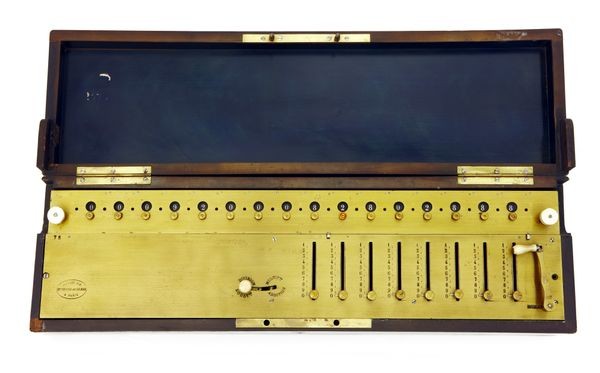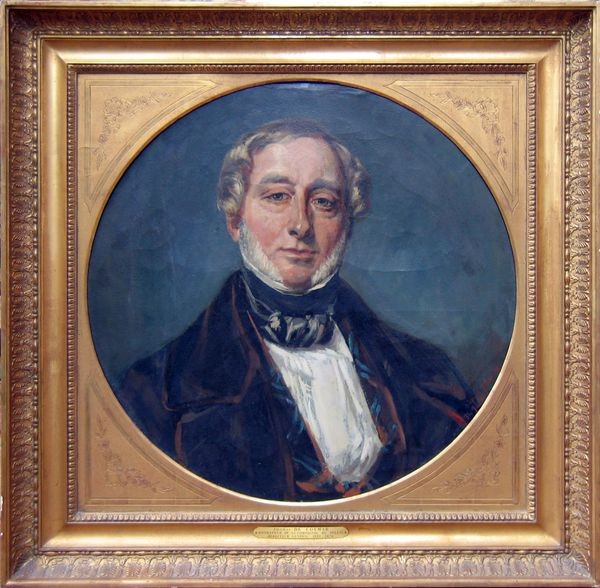Mass-Produced Calculators
Thomas Arithmometer
This four-function calculator joined Leibniz’s stepped-drum with industrial-revolution manufacturing.
Mass-Produced Calculators
Innovation exploded during the Industrial Revolution, nourished by a self-perpetuating cycle of new markets, new ideas and new technologies. A growing demand for mechanical calculators coincided with a growing capacity to design and build them.
This extraordinary confluence of need and ability helped to transform sophisticated calculators from handcrafted tools into mass-produced products.
From Craft to Commercial Commodity
Thomas de Colmar’s Arithmometer bridged two eras. First produced in 1820, it reached back 150 years to borrow Leibniz’s stepped-drum mechanism while looking ahead to the dawning age of mass production. It also combined modern precision and reliability with old world style: after setting the input numbers with sliding levers, users tugged an elegant silk ribbon to activate the machine.
First introduced in France, the four-function Arithmometer was the first calculator to capitalize on the manufacturing capability of the industrial age. Subsequent design changes, including replacing the silk ribbon with a crank, made the calculator more reliable. Nearly 2,000 Arithmometers were sold, and it remained in production into the 20th century.
Charles Thomas de Colmar
Designing and building arithmometers was only one of de Colmar’s businesses. Beginning in 1819, he founded three important insurance companies.
View Artifact DetailThomas Arithmometer design details, from M. Hoyau, "Bulletin de la Société d'encouragement pour l'industrie nationale"
The Society concluded that, “It is really not possible to combine the parts of this instrument any better than he has done in order to overcome the predicament of the subject,” and awarded de Colmar a gold medal.
View Artifact Detail




